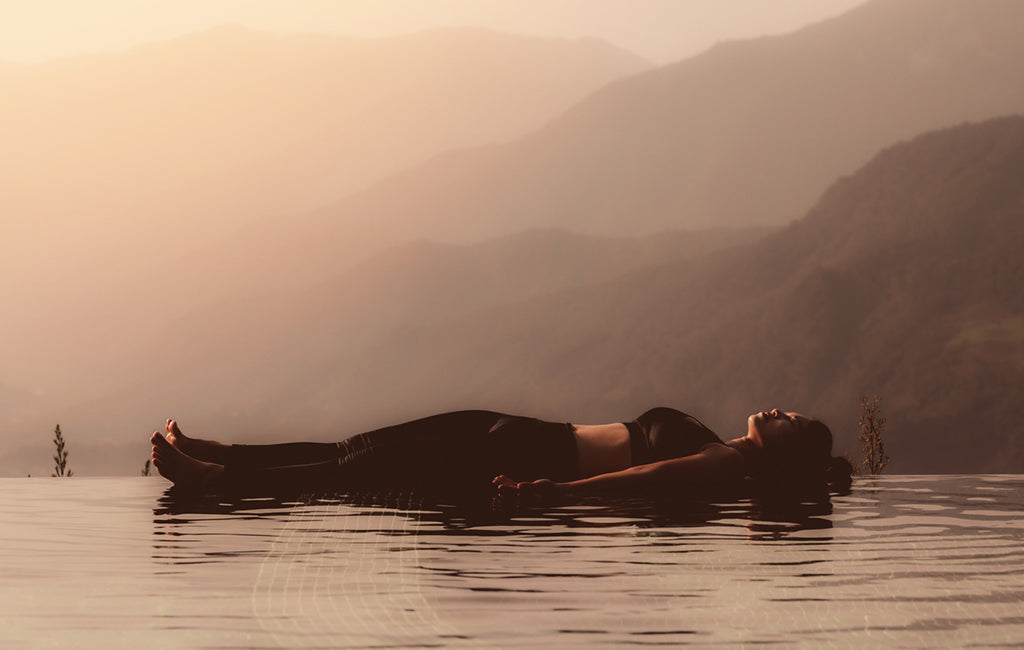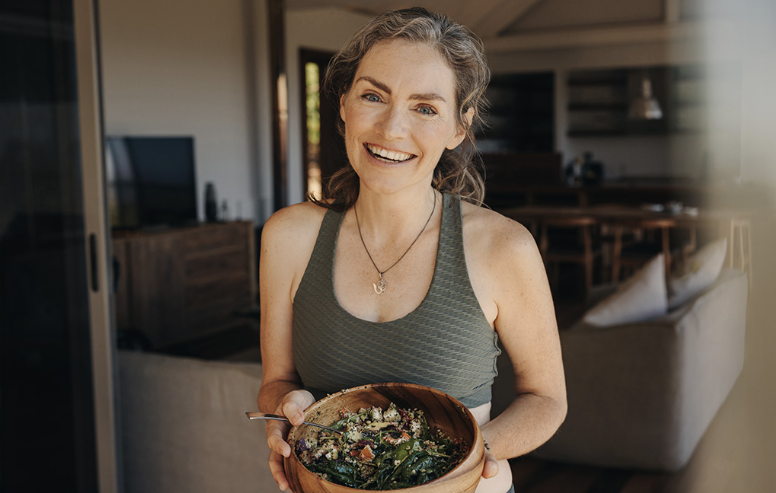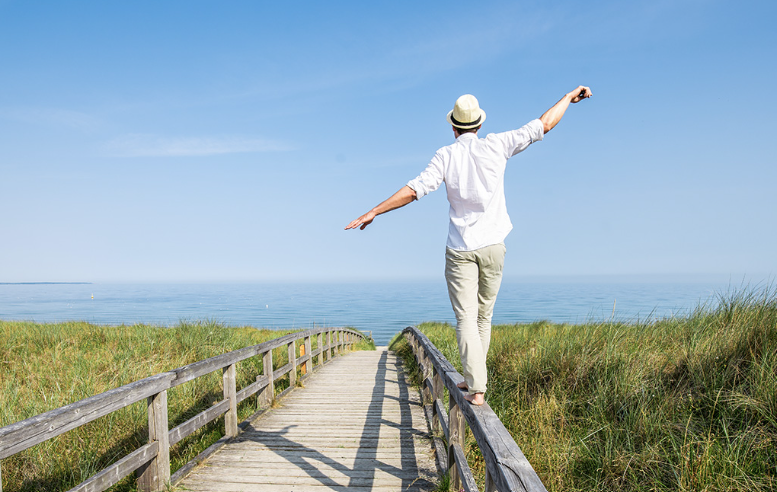
Life regularly gets in the way of healthy sleep cycles and a relaxed mindset. If you’re seeking techniques or even cbd sleep products to help, yoga should find itself at the top of your list for better sleep.
If you already have a list of favorite poses, creating a dedicated routine for yoga for sleep and relaxation can help you wind down before your head even hits the pillow. If you haven't tried yoga before, there's no reason not to. Few activities are more accessible or easy to try than yoga, regardless of your age or physical ability.
How Yoga Helps Relax Your Body
Most yogis describe being calm and relaxed after a session, but what actually happens within your body to achieve this effect?
In a physiological sense, yoga is restorative. Practicing yoga helps:
- slow and control breathing
- increase blood flow
- stretch muscle fibers
- decrease stress-related hormones.
Among respondents to a national survey, 55% reported that practicing yoga supports a better night’s sleep, and 85% noticed a reduction in their stress levels. Attempts to research yoga also suggest that the benefits include improved rest and mental disposition.
Muscle Stretching, Blood Flow and Recovery
While more and more athletes incorporate yoga into their exercise routines to build strength, flexibility and balance, stretching your muscle fibers holds its own merits and remains a phenomenal recovery and post-workout activity. Certain exercises, such as lifting or running, break down or contract muscle fibers and leave you with a “tight” sensation.
Holding a yoga pose stretches your muscle fibers, lengthening them into their natural state while also increasing flexibility. Flexible muscles can help reduce an overall feeling of tenseness and help with physical relaxation. All exercises — yoga included — increase the body’s blood flow, which, in turn, increases the delivery of oxygen to muscle tissues to aid recovery.
Breathing and Stress Reduction
In a stressful bout, have you ever been told to breathe deeply and count to ten?
The deep breathing techniques used in yoga and guided meditation positively stimulate the vagus nerve, which helps counteract the release of stress hormones that occurs during our “fight or flight” responses. In addition, studies suggest that regular yoga practice generally reduces your levels of stress hormones, such as cortisol.
Choosing the Right Yoga Activities and Poses Before Bed
When deciding which yoga routine to follow before you call it a night, the most important decision to weigh is whether your chosen poses will help soothe or energize.
Certain poses, including those that arch your back, may result in a boost in energy rather than a calming effect. Additionally, trying to reach more flexible positions may leave you with an aching back pain which may make falling asleep more challenging.
With breathing exercises at the forefront, less-active yoga likely serves as a better introduction to newcomers who have concerns over their flexibility.
Breathing techniques should be the foundation of your yoga for a better sleep routine. Think of your bedtime yoga session more like a guided meditation, enhanced by lighter physical movement and poses rather than the other way around.
With breathing exercises at the forefront, less-active yoga likely serves as a better introduction to newcomers who have concerns over their flexibility.
Ujjayi Breathing
Ujjayi breathing is gentle and calming. Also known as Ocean or Victorious Breath, this technique is known for a sound that mimics soft waves as air passes through breathers’ narrowed throat.
To practice Ujjayi breathing:
- First, make a “ha” noise while trying to recognize the restricting sensation toward the back of your throat and try to remember this feeling.
- Once you feel that you have identified the sensation, breathe in through your nose while trying to “pull” the air deeper into your belly.
- As you continue to inhale, focus on the rising feeling that moves up from your stomach and to your chest as the air continues to fill your lungs. You should feel your diaphragm engaged just below your chest and horizontally across your core.
- Once your chest feels full, slowly exhale through your nose while replicating the restricting sensation you felt while making “ha” sounds.
Breathing Break
If you have a minute, try to see if you can concentrate on your diaphragm’s contractions — felt just below your chest. The speed of Ujjayi breathing should be controlled entirely with your diaphragm.
Slow your breathing to ten seconds between each cycle. As Ujjayi breathing maintains the same duration for inhaling and exhaling, try to match both to counts of five.
If you find yourself more relaxed after six cycles, you may have a new method to achieve a sense of calm quickly.
5 Poses that Facilitate Healthy Sleep and Relaxation
For relaxing yoga poses, here are five options (along with a starting and finishing position) to try that don’t require additional items such as yoga blocks. Each of the five poses should be held for five breathing cycles or longer (at your discretion). While you’ll likely prefer performing these poses on a matt, a soft rug or carpeted area may work as well.
- Lie on your back with your knees bent and your feet flat to the floor, allowing your knees to touch each other.
- Close your eyes and focus on your Ujjayi breathing, taking a few minutes to separate yourself from the day and feel out any troublesome areas.
- While kneeling on the floor, bring your legs and toes together.
- Space your knees a hip-width apart.
- While exhaling, bend forward until your torso rests against your thighs.
- Place your hands back by your toes in a relaxed position, with your palms facing upwards.
- Laying flat on your stomach, place your elbows directly under your shoulders.
- Lift your chest, and then try to drop your shoulders toward your elbows.
- Look forward and let your chin fall slightly to feel a little more engagement through your neck to ease neck pain.
- Standing upright with your feet a hip-width apart, breathe in deeply.
- Bend forward while exhaling and keeping your torso extended to elongate your spine.
- Let your hands rest on your shins or grab the opposite arm’s elbow (don’t strain to touch the floor).
- To reset, keep your weight rooted in your feet and slowly return upwards.
- Variations include wider stances, half-bends (with your torso at a 90o angle from your legs) and forward bends while seated.
- Laying on your back, touch your big toes together.
- Inhale and raise one leg vertically until it reaches a 90o angle from your torso.
- Grasp the back of your thigh before pressing forward with your leg against your hands.
- Hold for five breathing cycles before switching legs.
- Lay flat on your back with your legs and arms extended, palms facing upward and relax for at least five minutes.
- If this pose is not comfortable, find a position that allows you to relax.
Combining Yoga With Other Relaxation Techniques
Since your calming yoga session is unique to you, consider incorporating other deep relaxation techniques or methods you enjoy.
Candles, Incense & Other Scents
As with yoga, certain scents can help people find a centered sense of tranquility and ease when paired with a breathing exercise. Consider lighting incense or using a diffuser within your yoga space.
Candles can help accent your setting’s ambiance with lower lighting that many people find inherently relaxing.
Music and Nature Sounds
Perhaps you rely on a set of specific songs to put you in a good mood, or you have grown fond of the many Spotify playlists and Youtube videos that compile meditative music.
Softer, more melodic rhythms aid in distancing yourself from the day’s hectic activities. If you are an extrovert or happen to crave something more interactive, play recordings of group meditation chants and join along.
If you feel most at peace while out in nature, there are numerous recordings, videos and phone apps that allow you to recreate that experience by softly playing wind, rain, running water, animal and other sounds. Listening to these tracks with your eyes closed can transport you directly to a happy place — even if you are trying to squeeze your session in at the end of a busy weekday.
CBD
To better achieve a more relaxing yoga session, consider adding a CBD oil product, such as a CBD oil roll-on, before or after your routine. The calming scent of CBD oil roll-on can naturally enhance your overall yoga experience and promote better relaxation and sleep.
Cannabidiol (CBD) is one of over 100 cannabinoids produced by marijuana and hemp plants. Unlike tetrahydrocannabinol’s (THC) psychoactive effects, CBD oil does not produce a “high” in users.
Instead, CBD helps our endocannabinoid system (ECS) regulate physiological functions, including sleep and stress response.
To that end, CBD products can take the form of oils, rubs, mints, tablets and more. Applying a topical product or taking CBD oil under the tongue can help you feel the effects sooner.
If you wish for a more subtle release of CBD’s effects, consider adding it to your food or drink before a yoga session. Additionally, CBD sleep support tablets may help you gain more restful nights and a CBD-infused rub can reduce post-exercise inflammation after your workout session.
Start With Zebra CBD
Yoga is a practice that can help you destress after a busy day and prepare your body for a good night’s sleep. A breathing exercise can help calm the mind, while yoga poses serve to relax your body.
If you’d like to try adding a CBD product to your yoga and deep relaxation efforts but don’t know where to start, Zebra CBD is here to help.
As America’s leader in CBD science and research, we make understanding and benefiting from CBD’s benefits easy. Zebra CBD provides products in various forms — supported by the industry’s only Label Accuracy GuaranteeTM.
Each of our products are tested by two third-party labs, so you can rest assured that you’re consuming only the highest quality ingredients for your restful sleep.
Source:
Allied Services. The Vagus Nerve: Your Secret Weapon in Fighting Stress. https://www.allied-services.org/news/2020/june/the-vagus-nerve-your-secret-weapon-in-fighting-s/
Dick’s Pro Tips. Eight Yoga Poses to Help Relax Your Mind at Home. https://protips.dickssportinggoods.com/sports-and-activities/yoga-and-studio/8-yoga-poses-relax-mind
Harvard Health Publishing. Yoga for Better Sleep. https://www.health.harvard.edu/blog/8753-201512048753
Medium. What Happens Inside Your Body During Yoga Practice. https://medium.com/@RandoxHealth/what-happens-inside-your-body-during-yoga-practice-6deee1019c4
Wikipedia. Ujjayi. https://en.wikipedia.org/wiki/Ujjayi
Yogi Approved. Afternoon Slump? Practice These Yoga Poses to Boost Your Energy. https://www.yogiapproved.com/yoga/yoga-energy-boost/
Yoga Journal. 15 Poses to Help You Sleep Better. https://www.yogajournal.com/poses/15-poses-help-sleep-better/
Yoga Journal. Yoga for Energy. https://www.yogajournal.com/poses/yoga-by-benefit/energy/
Yoga Journal. Yoga Sequence to Train Your Brain to Relax. https://www.yogajournal.com/practice/yoga-sequences/yoga-sequence-train-brain-relax/










